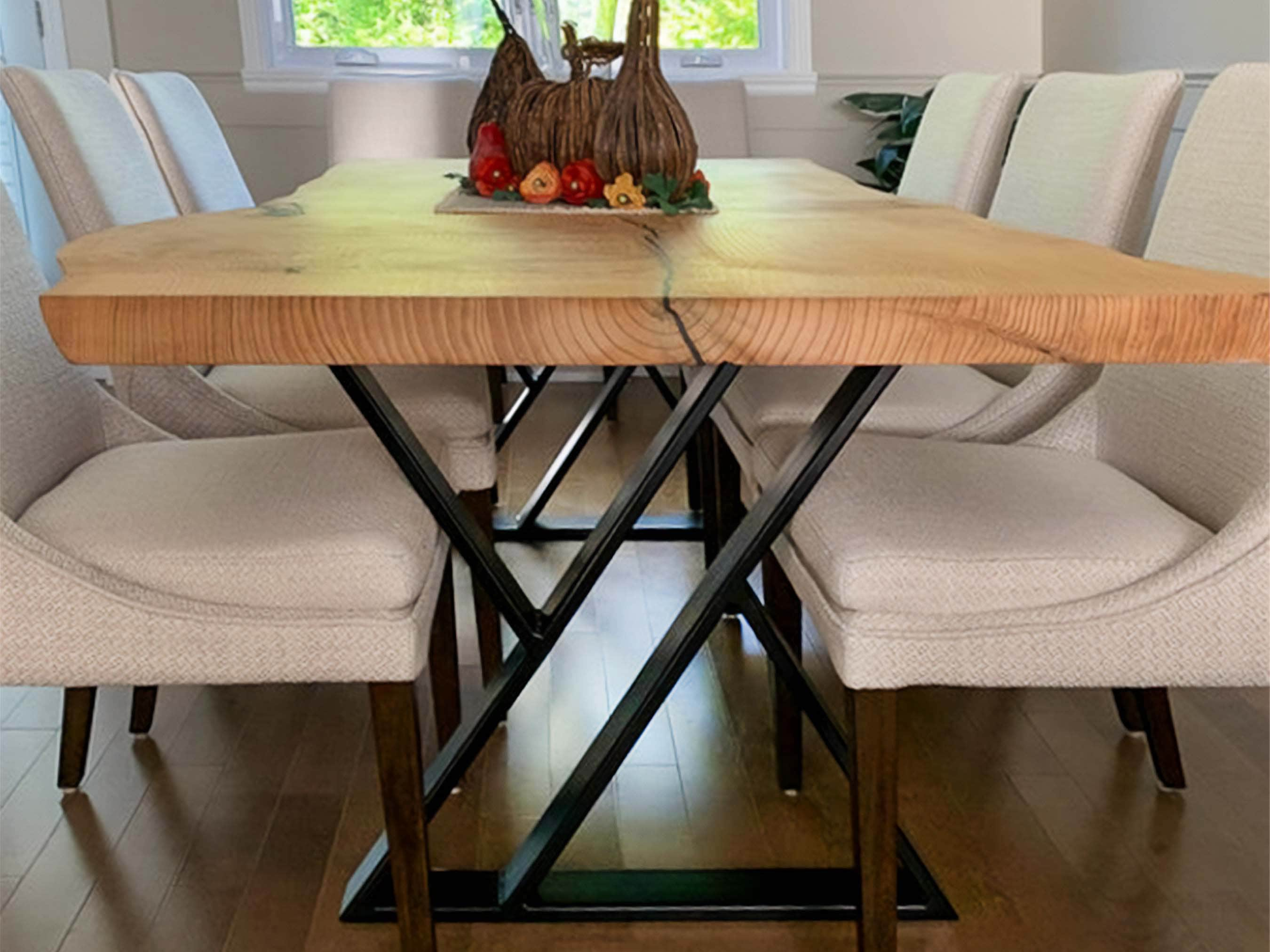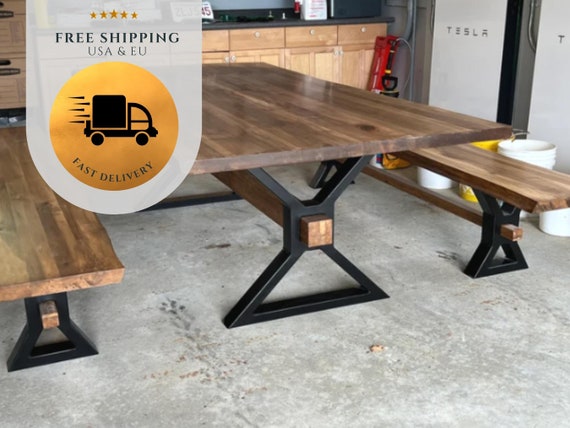Top Trends in Dining Room Table Legs to Elevate Your Dining Space
Top Trends in Dining Room Table Legs to Elevate Your Dining Space
Blog Article
Choosing the Perfect Dining Table: What Styles Work Best for Your Home?
Selecting the suitable eating table for your home can be a nuanced procedure that balances looks and functionality. Whether your space leans towards traditional sophistication, contemporary minimalism, rustic beauty, or industrial elegant, the range of styles available can accommodate varied tastes. Each layout uses unique advantages and difficulties that can either enhance or disrupt your dining area's harmony. Comprehending how different materials, forms, and dimensions communicate with your existing style is important. To navigate these selections successfully and locate a table that genuinely complements your home, consider the complying with aspects in detail.
Examining Your Space
Evaluating the measurements and design of your dining area is an essential initial step in choosing the excellent table. Begin by gauging the length and width of the space, making up doorways, home windows, and various other building attributes that might affect table positioning. This makes certain that your table not just fits but also enables comfortable movement around it.
Consider the number of individuals you normally entertain. A table must suit your house's everyday requirements while offering adequate flexibility for periodic guests. As a policy of thumb, allocate a minimum of 24 inches of table size each to ensure a comfortable dining experience.
It's also vital to preserve suitable clearance around the table. Preferably, there need to be at least 36 inches between the table side and wall surfaces or other furniture, allowing simple accessibility and activity. For spaces where chairs with arms or extra storage systems like buffets are entailed, boosting this clearance to 48 inches is recommended.
Lights and atmosphere play considerable roles too. Guarantee that your eating table straightens with existing illumination components or plan for sufficient lighting options. This extensive spatial assessment assurances that your eating table not just fits literally however also integrates with your room's overall functionality and aesthetic.
Popular Table Styles

Traditional eating tables frequently feature elaborate information, curved legs, and abundant timber finishes, evoking a sense of timeless sophistication. They are best for homes with timeless style or those aiming to add a touch of refinement to their dining area.
Modern eating tables focus on simplicity and tidy lines, frequently integrating materials like glass and metal. These tables are perfect for modern spaces, offering a sleek and minimalist appearance that matches minimalist layout philosophies.
Rustic dining tables, on the other hand, highlight all-natural materials and a handmade appearance - dining room table legs. They commonly include redeemed wood and a distressed finish, creating a warm and welcoming atmosphere. These tables work well in farmhouse-style homes or those looking for a relaxing, organic feeling
Industrial dining tables combine raw products such as metal and wood, frequently showcasing a practical have a peek at this website aesthetic. This design is well-suited for lofts or city rooms, adding a touch of sturdy appeal and longevity to the eating experience.
Each style supplies unique advantages, making it necessary to choose one that lines up with your home's total style and your individual preferences.
Material Selections
When selecting an eating table, the choice of product plays a critical role in figuring out both the table's appearances and capability. Wood, steel, glass, and composite products each deal distinct advantages and obstacles, making it essential to straighten the product with your home's decoration and lifestyle requirements.
Wood is a timeless and versatile alternative, available in varieties such as oak, walnut, and mahogany. Understood for its durability and warmth, timber matches both traditional and contemporary insides. It requires regular maintenance to stop scratches and bending.
Metal tables, typically crafted from stainless steel, aluminum, or functioned iron, are commended for their modern allure and toughness. They are especially matched for commercial or minimalist setups however can be vulnerable to dents and may feel chilly to the touch.
Glass dining tables bring an air of sophistication and openness, suitable for smaller sized spaces as they create an illusion of more room. While easy to tidy, glass can be at risk to smudges and needs mindful handling to avoid chips and fractures.
Composite materials, such as MDF and plywood, offer cost-efficient and adjustable remedies, though they may do not have the longevity of all-natural products. Picking the appropriate material guarantees your table is both a functional possession and a visual pleasure.
Sizes And Shape Considerations
After identifying the appropriate material for your eating table, the next factor to consider is choosing the ideal form and dimension to fit your area. Conversely, round tables foster a sense of intimacy and are exceptional for smaller dining areas, motivating conversation by eliminating edges and making everyone really feel just as included.
As a policy of thumb, designate at least 24 inches of table size per person to make sure comfortable dining. Additionally, take into consideration the table's clearance space: there ought to be at the very least 36 inches in between the table edge and the wall surfaces or other furniture. Extending tables provide flexibility if you often hold bigger celebrations, providing additional seats when needed without occupying extra space daily.
Matching Your Decor
Selecting an eating table that integrates with your existing design is pivotal in producing a cohesive and inviting space. Begin by examining your go to my blog current interior decoration style, whether it be modern, typical, rustic, or eclectic. The table should enhance the overall aesthetic, not take on it. For example, a streamlined, minimalist table with tidy lines is excellent for a contemporary home, while a vintage, luxuriant table fits an extra typical setting.
Color and material are equally substantial. If your design includes cozy tones and all-natural products, consider a wooden table to improve the natural feel. On check it out the other hand, a glass or metal table might be better suited in an area dominated by amazing shades and commercial elements. Pay attention to the finish, as it needs to mirror other furniture and components to maintain harmony.
A rough-hewn, redeemed timber table can add personality to a rustic area, while a refined marble surface can raise a lavish dining location. A well-matched eating table not just boosts aesthetic allure however likewise enhances the overall eating experience.

Final Thought
Choosing the excellent eating table demands mindful factor to consider of room, style, materials, form, and dimension. Typical tables enhance classic insides with rich timber coatings, while contemporary tables fit modern setups via glass and metal.
Report this page